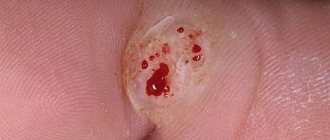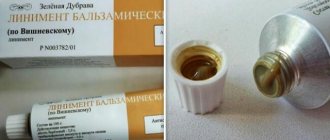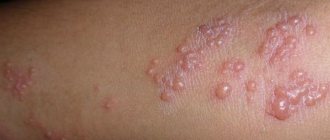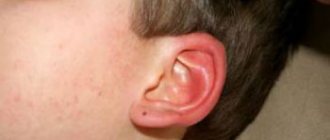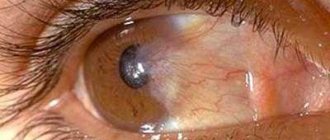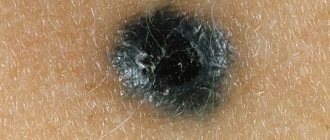Accidental damage and its consequences
What happens if you pick off a papilloma not on purpose?
It's better to avoid this. Most people infected with papillomavirus are aware that it is impossible to deliberately cut, pick, or tear off the stroma. But there are situations when a person accidentally tears off a papilloma. Growths on thin fibers located in delicate places (in the armpits, under the breasts, on the eyelid) can be accidentally damaged. What happens if you tear off a wart:
- The virus is highly likely to spread to other parts of the body. It is quite possible for several formations to appear on the skin if a papilloma is accidentally torn off.
- An inflammatory process caused by an associated bacterial infection. If you accidentally pick off a papilloma, the damaged area will become red and inflamed.
- If a man cuts off a papilloma on his face while shaving, the razor cut is a wound site that becomes the cause of self-infection (autoinoculation). Cutting off a papilloma with a razor is also dangerous for another reason - the resulting wound becomes a direct site of infection and must be treated immediately.
- If a woman accidentally rips off a papilloma under her breasts, she needs to go to the doctor. Scientists suggest a connection between papillomavirus and cervical cancer.
- You can accidentally tear off a papilloma with clothing - the seams, sleeve edgings cling to the growth, the stroma can become inflamed from a blow or scratch.
The consequences in such a situation can be quite serious - damage to the epidermis opens the way for further spread of the viral infection, so tumor detachment can be accompanied by signs of inflammation, itching, pain, and discomfort. You cannot intentionally pick off a stroma, but if this happens by accident, you need to follow safety precautions so as not to infect others.
If you accidentally hit a papilloma while shaving, the wound needs to be disinfected. After which, consult a doctor.
What happens if the papilloma comes off, getting caught in the tissue? When the process occurs painlessly under the influence of clothing, and there is no visible damage to the skin at the site of the growth, there is no need to worry - the body has dealt with it on its own. Some people wonder if it is possible to tear off papillomas if they come off? It’s still impossible - when the moment comes, the growth will fall off on its own.
It is quite easy to injure a soft growth in everyday life. What to do will depend on the accompanying symptoms.
Typically, papillomas on the neck of men are damaged during shaving. It is often possible to accidentally cut off a papilloma. Formations on the back can easily be damaged while taking a shower or with nails.
Papillomas on the face, neck and armpits are easily injured during shaving
The greatest discomfort is caused by growths located in the folds of the skin and under the armpits. They often rub against clothes or accessories, and then can hurt for a long time.
Symptoms of papilloma damage depend on the type of exposure. If you accidentally cut off a growth while shaving, it will cause profuse bleeding. This is explained by the fact that papilloma is nourished by blood vessels.
Accidental damage to the growth with nails causes the head of the papilloma to fall off. Also, it may not come off completely, then over time a wound will form in its place and the wart will grow back.
If a papilloma comes off due to mechanical impact while taking a shower, blood will surely bleed, and a burning sensation may be felt in the area of the wound.
When the growths are rubbed, swelling and pain when pressed are noted. The consequences of such damage can be very diverse. The discomfort may go away after a few days, and the papilloma may come off completely if the vessels that supply blood to the growth have been compressed.
Papilloma can come off on its own unnoticed, but most often people encounter accidental damage to growths in everyday life. In some cases, over time, papilloma may re-form in the same place. This is due to the fact that the root of the wart remained under the skin, and its blood supply was not interrupted.
In such cases, a person faced with such a problem has two options: leave everything as is or go to the doctor to remove the growth. The second option is preferable, since professional removal interrupts the nutrition of the papilloma and removes it from the root.
If, due to its location, the growth is often injured, it is better to remove it in the clinic.
It is not recommended to try to get rid of the wart yourself using improvised means. Celandine juice, widely used in folk medicine, is poisonous and can cause severe skin burns.
Using alkaline or acidic products at home is unsafe. Despite the prevalence of such drugs and ease of use, these products are not always effective and may not remove papilloma from the root.
If the growth re-forms at home, you can try using salicylic alcohol for cauterization, but this measure rarely brings results. The best option in this case is to trust the professionals. Removing papilloma with a laser or nitrogen allows you to get rid of the growth in a few minutes, while guaranteeing the absence of scars and re-formation of papilloma in the same place.
The rapid appearance of a large number of papillomas on the skin indicates a decrease in immunity and HPV activity. In this case, drug therapy is necessary. The patient is prescribed immunostimulants and antiviral drugs. The growths can be removed only after the virus activity has been suppressed.
Papillomas cause not only cosmetic discomfort, but can also provoke the development of cancer.
Most people intuitively understand that it is better not to injure such formations on the skin, but it still happens to them sometimes. And the consequences of this can be very diverse.
The main reason for the formation of papillomas is HPV. This virus can remain in the body in a latent form for years, and when favorable conditions are created, it is activated and manifests itself in various growths on the body. There are a number of factors that provoke the development of the pathological process.
IMPORTANT TO KNOW: Anastasia, an ordinary girl, not even a blogger, shared her secret against moles, papillomas and warts read here...
This usually happens in the following cases:
- decreased immune status;
- tendency to colds;
- prolonged exposure to stress;
- depressive states not corrected by medications;
- pathological addiction to alcohol;
- long-term use of antibacterial or hormonal agents;
- promiscuous sex life;
- diseases of the digestive tract;
- visiting public places (saunas, baths).
In each clinical case, the impetus for the appearance of neoplasms on the skin and mucous membranes is a different combination of provoking factors.
How to get rid of papillomas
Despite their benign nature, papillomas are formations that cannot disappear on their own. Such growths disappear only under mechanical influence. But this does not happen with all papillomas, but only with thread-like ones or those that have a thin base (neck).
If the papilloma has come off, then you cannot turn a blind eye to it. If there are no visible signs of inflammation at the previous site of the tumor, this indicates that there is a sufficient amount of antibodies in the body that can suppress the virus. But if the tissues are swollen and inflamed, it is recommended to consult a dermatologist.
Is it possible to tear off
When patients are interested in whether it is possible to tear off papillomas, doctors give the same answer - it is absolutely not worth doing this consciously.
But at the same time, this quite often happens by accident and no one is immune from it. To remove a growth accidentally, you don’t need to make any special efforts.
Often such an injury occurs in a dream, when a person, for example, scratches a mosquito bite, and there is a papilloma nearby.
We invite you to familiarize yourself with Exacerbation of psoriasis: what to do and how to relieve it, causes and treatment
More often, growths localized in moving places come off: the neck, upper or lower extremities, face. The papilloma can be damaged by some items of clothing, accessories or straps of bags and backpacks. And sometimes a person rips off some newly formed growth, without even suspecting that it is a papilloma.
Others, without thinking about the consequences, try to tear off or cut off the papillomas on their own.
HOW TO CURE PAPILLOMAS, WARTS, BAD MOLES?
Severing a papilloma is a serious matter, but how can you determine the importance of the moment if you do not have practical knowledge in this matter? This article will help you put all the dots into perspective. The problem and all the risks that may arise as a result of traumatization of the growth are described here in detail.
https://www.youtube.com/watch?v=RNhQkaOUC0Y
If papilloma appears on the body or mucous membranes, this means that the human papilloma virus has been living in the body for a long time. Medicine has studied more than a hundred strains of HPV, many of which can cause serious consequences, including the degeneration of benign papillomas into cancerous tumors.
Detachment and degeneration of growth
It happens that papillomas dry out on their own, darken and fall off. This can occur as a result of taking drugs that enhance immunity or vitamin complexes. In addition, neoplasms can appear and disappear with changes in hormonal levels. Thus, in pregnant women, papillomas often appear on the chest and abdomen, and disappear after childbirth.
The spontaneous disappearance of tumors indicates an increase in the body’s defenses or the elimination of factors that activated HPV.
Sometimes a small papilloma begins to grow and change color. Most often this happens when it transforms into another neoplasm - hemangioma. This is a benign tumor consisting of vascular tissue. It has a rich crimson or dark purple color and protrudes several millimeters above the surface of the skin. After a thorough examination, this formation can be eliminated using one of the minimally invasive methods.
It is recommended to remove papillomas and other unwanted growths on the body without waiting until they become a source of problems or complications. To do this, you need to go to a specialized clinic with an experienced dermatologist or cosmetologist.
You need to take care of strengthening your immune system, lead a healthy lifestyle, give up bad habits and be less nervous. Then the body itself will be able to give a worthy rebuff to any diseases.
Papillomas cause not only cosmetic discomfort, but can also provoke the development of cancer.
Most people intuitively understand that it is better not to injure such formations on the skin, but it still happens to them sometimes. And the consequences of this can be very diverse.
Causes of papillomas
The main reason why a benign tumor forms is infection with the virus through domestic or sexual contact. HPV can remain in the body for years, but manifest itself under favorable conditions. Reasons that provoke neoplasms in different parts of the body or mucous membranes:
- weak immunity;
- stress, depression;
- long-term use of medications;
- frequent change of sexual partners.
The structure of papilloma and warts is stroma (base, island) with connective fibrous tissue. Localization - on the face, neck, eyelids, external genitalia, chest, armpits.
When is medical help needed?
What to do if the papilloma comes off will depend on the specifics of the damage.
When cutting or tearing off the papilloma, heavy bleeding is observed. The blood needs to be stopped; it will continue to flow for a very long time.
First, the wound should be treated with any antiseptic to avoid infection. Then you need to take a piece of cotton wool or bandage and press it tightly to the wound. You need to hold the compress for several minutes until the blood stops flowing. Then re-treatment with an antiseptic is carried out.
If the papilloma has partially come off, it needs to be covered with a band-aid after treatment.
When rubbing a papilloma, it is necessary to secure a soft bandage over the growth, which will protect it from further damage. A wait-and-see approach is chosen; the condition of the papilloma should be monitored for several days. If there is no discomfort, the growth has not changed color, size or shape, you can do nothing. If after a few days the papilloma has enlarged and is itchy, you should consult a doctor.
After treating a detached papilloma, you need to carefully listen to your own feelings. What to do next will depend on how you feel. If the next day after the incident there is pain, burning, the skin around the wound turns red and becomes hot, you should consult a dermatologist. Such symptoms indicate an inflammatory process.
Infection with papilloma poses a danger to the entire body. This small growth has good blood circulation. Inflammation of papilloma leads to the fact that the infection spreads through the bloodstream throughout the body. Treatment may require removal of the papilloma and further antiviral therapy or antibiotics for severe inflammation.
Papillomas can come off for various reasons, and this does not always pose a health hazard. However, there is a risk of tumor cells degenerating into cancer. The alarming symptoms in this case are as follows:
- pain and burning;
- itching;
- darkening of the growth;
- bleeding or dark discharge;
- increase in size.
Malignant papilloma can become covered with a crust, under which a weeping wound remains. However, such a wound does not heal, which is the first sign of a malignant process occurring in the skin cells. In this case, you should immediately consult a doctor.
https://www.youtube.com/watch?v=hoxPayHeOpc
The doctor will remove the papilloma and send the tissue for histological analysis. Once cancer is confirmed, further treatment will depend on how far it has spread. If a malignant process begins in healthy tissues around the papilloma, the patient is prescribed chemotherapy and skin irradiation.
How to treat a wound
To prevent the penetration of infection that provokes the inflammatory process, it is necessary to properly and promptly treat the wound received during the injury. Conditions should be created for rapid healing of the wound, without leaving scars. Treatment of the affected area:
- carefully inspect the damaged area,
- if there is bleeding, stop it by applying a bandage soaked in hydrogen peroxide. Apply the compress for 15 minutes,
- You can clean the wound with alcohol or an antiseptic, or in extreme cases, iodine or brilliant green,
- the wound should be sealed with a sterile cloth bandage using an adhesive plaster, which will reduce the penetration of bacteria,
- It is not recommended to peel off the crust, it should fall off on its own,
- if a piece comes off, put it in saline solution and take it for histology to eliminate the risk of degeneration.
Diagnostics will help determine the malignant nature of the growth, and the doctor will advise the correct method for removing the growth.
What to do if a papilloma comes off
Doctors recommend that if new growths are detected on the skin, seek medical help for accurate diagnosis and removal of growths; self-removal is not allowed. If a papilloma is torn off intentionally, the risk of infection or development of a malignant tumor increases.
What you can and cannot do if you have growths:
- You can apply powder, special creams, masks, scrubs that cleanse the skin.
- It is allowed to use proven drugs against papillomavirus.
- Is it possible to cut off papillomas? Rude interference is strictly prohibited.
- Why can't you tear off the growths? There is a high risk of developing a malignant tumor.
- It is necessary to avoid gross damage to the growths and avoid friction against the seams.
- Do not scratch or itch the skin. Hygiene procedures should be carried out very carefully.
There are situations when a strong body independently fights a skin disease.
A person may have a growth for several years, but one day it comes off painlessly. This means that the body has produced enough antibodies to fight the virus. In this case, there is no risk of degeneration into a malignant tumor; the location of the growth is dried out, without wounds, bleeding or inflammation. What happens if the papilloma is damaged intentionally:
- The formation is viral in nature; the causative agent is present in the skin growth in high concentration. Is it possible to cut off papillomas with scissors or a razor? In no case. Viral particles will quickly spread over the surface of the epidermis, and instead of one formation, a group will appear.
- If the virus strain is of the oncogenic type, the risk of the growth degenerating into a malignant tumor increases significantly. If a papilloma is torn off during water procedures or due to gross damage, you need to treat the wound and consult a doctor.
- The skin growth contains an infectious agent. If you intentionally touch the tumor, an inflammatory process will begin, accompanied by bleeding, swelling, redness, and pain. You absolutely cannot cut off a papilloma yourself.
- An inflammatory focus forms on damaged skin. Against the background of weak immunity, the consequences can be serious. Even if the stroma contains a strain of a non-oncogenic virus, the pathogenic agents will spread to neighboring areas of the skin.
What should a person do if he picks off a papilloma with his fingernail? Inspect the location of the growth. When signs of an inflammatory process are present, the damaged area must be treated with an antiseptic composition. All objects that came into contact with the affected skin surface must be disinfected. Next you need to undergo diagnostics by seeking advice from a specialist.
Skin diseases cannot be ignored so as not to harm your own health. The virus in the body does not necessarily have a high oncogenic risk, but this cannot be excluded before undergoing diagnosis. Timely diagnosis and treatment help prevent a situation where a growth degenerates into a malignant one.
Procedure if you pick off, cut, or tear a papilloma:
- Inspect the damaged area of the skin.
- Treat the wound with an antiseptic.
- Disinfect contact surfaces.
- Visit the diagnostic center and get tested.
- Consult a doctor for skin diseases.
Women often wonder what to do if they tear off a papilloma under the breast or on the back with underwear? You need to examine the wound for inflammation - if there are no signs of infection, there is no need to worry. If the papilloma is torn out, bleeding, the tissues are swollen - this is the beginning of the inflammatory process.
It is not at all uncommon for a papilloma to come off. This is especially true for small formations on a thin stalk in the neck, armpits or groin.
It is easy to pick off a wart here even when changing clothes or shaving. At this moment, you can feel pain and notice that blood has begun to flow.
What to do
How is the patch used?
With the help of a simple patch, you can get rid of the troubling problem in a short time. What does the product look like and what is it? This is an ordinary piece of fabric, which is made in the form of Velcro on one side and covered with film on the other. Underneath it are all the necessary substances that destroy the virus. That is, the product is no different from an ordinary pharmaceutical plaster.
The patch for removing papillomas is very simple to use.
- take the patch out of the package and cut out a piece of it that should match the size of the wart;
- we take the film from the adhesive side of the patch and stick it to the problem area;
- then, we secure it all on top with a regular plaster to better fix the product.
It must be kept for at least 12 hours. Then, you should change it, that is, replace it with another one. Already with the first use, the patient will see the result. A crust should form on the papilloma. Each time, it will heal and become smaller in size. You need to continue the procedure until it completely falls off. Each time the mole gets smaller, you need to apply a smaller piece of the patch.
On average, it will take one or two weeks to get rid of the growth. It is important to remember that the remedy must be used regularly during this time so that the wart does not begin to come to life again, in other words, to grow. Until you completely get rid of papilloma, it is not recommended to stop the course.
How to use the product? The Salipod patch, sold in any pharmacy, can be easily purchased. Its composition was developed to get rid of not only papillomas and warts, but also dry calluses. The medicine is released in different forms. There may be small disposable strips, i.e. 1 patch per 1 application. And there are also large sizes that are cut independently into squares or circles.
- steam your feet and wipe them dry;
- cut a small piece from the patch so that the product covers the formation completely, and stick it on;
- glue a regular adhesive plaster on top so that it does not cover the medical one and fixes it more tightly to the tissues;
- after 10-12 hours the product must be changed.
The course of treatment is 2-3 weeks. The duration depends on the extent of the spread of the virus. After all, warts occur due to papillomavirus. Therefore, the name of the formations is papillomas.
What is in the drug that has a healing effect? If a person tries to get rid of papillomas on the neck, arms or feet with a simple adhesive plaster, then most likely nothing will work. What components of Salipod have an effective effect on warts? The whole secret lies in the impregnation, which consists of salicylic acid.
It has a gradual effect on the skin, softening and rejecting infected tissue. The patch for removing papillomas is applied only to the affected area, without affecting the healthy one. Otherwise, the skin begins to exfoliate, and pain occurs. The drug is applied in the morning and evening so that the warts are covered.
Then the problem will be resolved faster. The anti-tumor agent is replaced with an ointment based on salicylic acid. But patches are more convenient and practical, do not interfere with movement and last for a maximum duration. Before buying a medicine, you need to check the date of its manufacture. An expired product has little effect.
DETAILS: Is it possible to cure HPV 16 forever: treatment and prognosis
Not only acid, but also sulfur is included in the composition of the patch. It dries out areas of the skin, killing fungal and bacterial infections that accompany growths. Salipod is one of the most famous brands, but there are other patches used to treat warts and papillomas. One of the well-known companies offers to purchase a patch with a pad soaked in thuja extract. It is designed to remove papilloma from the foot.
Advantages and disadvantages of the drug. Therapeutic patches have their pros and cons. Let's look at the benefits first:
- low price;
- does not cause pain when removing growths;
- does not contain harmful substances;
- Warts actually disappear faster.
But there are also disadvantages, of which there are not very many:
- the growth will not go away in a few days, so the minimum course of therapy is a week;
- Constantly wearing a patch does not always meet the requirements of aesthetics, but the main thing is the result of treatment.
Precautions must be taken. In order to avoid irritation and inflammation in healthy areas of the skin, the papilloma is carefully sealed with a cut piece of tape, having previously specified the required dimensions.
When the effect of the product begins, the papilloma will soften and simply come off. But it is not worth removing the formation in this way: slight bleeding may begin, and some dangerous infection may get into the wound.
Before using the patch, you should consult a specialist. The dermatologist determines whether there is a need to remove the papilloma or not, and whether a salicylic acid-based patch is suitable for this purpose.
Precautionary measures
The consequences of papillomavirus (HPV) are difficult to predict. Papillomas can come off without any negative complications. In this case, the growth stops feeding and it falls off on its own. In this case, it is necessary to treat the area with an antiseptic for several days, but there are no immediate health risks in such cases.
Severance of papillomas can sometimes occur completely unnoticed. If the papilloma falls off and bleeding begins, you should definitely make an appointment with a doctor. If possible, it is recommended to conduct a histological analysis of the cells of the torn wart to exclude malignant processes.
Doctors recommend removing growths that are easily touched by nails, a razor, or rubbed by clothing. Timely removal of a potentially dangerous neoplasm on the skin is the best measure to prevent the appearance of malignant papillomas.
We suggest you familiarize yourself with How you can use Trichopolum for pimples and acne
The appearance of neoplasms on the skin can be prevented by regular restorative therapy, compliance with personal hygiene rules, and increased immunity. Self-removal is effectively countered by medical treatment. The following precautions will help prevent accidental tearing of stromas:
- Do not dry yourself with a hard towel after water hygiene procedures.
- Do not wear clothes with rough seams, carefully remove things and accessories.
- Try not to comb or scratch the areas of skin affected by papilloma.
- Use razors carefully so as not to cut off the growth.
- If a wound has formed, treat it with an antiseptic, cover it with a band-aid and consult a doctor.
How to stop bleeding
Every person should know what to do if a papilloma comes off and bleeding comes from it. At home, first of all, it is necessary to stop the bleeding and carry out antiseptic treatment. For these purposes, you can use what you have at home: a solution of potassium permanganate, fucorcin, hydrogen peroxide, ethyl alcohol. The most gentle remedy is hydrogen peroxide. It allows you to quickly stop bleeding and does not cause discomfort.
Processing sequence:
- A sufficiently large amount of antiseptic is applied to a cotton swab or cotton pad and the wound surface is thoroughly wiped with it. It is important to ensure that there are no cotton fibers left in the wound, which can cause secondary infection.
- To stop bleeding, apply a piece of sterile bandage folded in several layers to the wound.
- You need to hold the bandage for at least 5 minutes to ensure that the blood stops flowing. In this case, it is important to correctly regulate the force of pressure so that stopping the blood flowing from the wound does not disrupt local blood circulation.
- After the bleeding has completely stopped, it is necessary to re-treat the wound surface with an antiseptic agent, and then cover it with a bandage or plaster.
- The next smart step is to make an appointment with a dermatologist as soon as possible.
If there is such a possibility, then the torn piece of papilloma must be placed in saline solution and taken to a medical facility as soon as possible for diagnostic testing. If, after a papilloma has been torn off, the patient still does not want to go to the doctor or does not have such an opportunity, then it is important to at least initially observe the condition of the damaged area, and if suspicious signs are detected, go to a medical facility without delay.
What happens if you accidentally damage a papilloma?
Papillomas are small growths on the skin. They can differ from each other in shade and size, although usually we are talking about whitish formations up to a centimeter in size. Sometimes there are also papillomas of a pronounced brown color and growths over 10 millimeters.
And although such tumors are usually benign, in everyday life they cause a lot of trouble and inconvenience. In this material, we will figure out what happens if a person accidentally damages a papilloma with clothing or decides to cut it off intentionally, and we will also consider the necessary measures for such situations.
Translated from Latin, the word “papilloma” means “papilla”. When a formation caused by HPV appears on the body, it is similar in appearance to a cauliflower fork. To the touch, papilloma can be dense or soft. The former are distinguished by a stroma with coarse fibrous tissue, while in the soft ones this tissue is loose and formed by many vessels with thin walls.
As noted above, usually the size of a papilloma does not exceed a centimeter, but the tumor can easily reach 40 millimeters with the most unfavorable outcomes. The minimum size of the growth is 2 millimeters. Tumors can form both on the skin and on the mucous membranes.
Despite the benign nature of papilloma, it causes a lot of discomfort when performing everyday tasks.
Such growths are very different from an ordinary mole in their shape, resembling a rounded mushroom with a thick stalk. Due to such structural features of the tumor, they often come off.
However, sometimes the formations are also flat in shape, in which case there may be a desire to rip them off.
But doing this yourself is in no way recommended, since today there are many professional medical methods used to perform this procedure. In addition, despite the benign nature of the tumor, it is impossible to call it harmless, and the decision to remove it with a razor can lead to an unpleasant result.
As for the methods of transmission of the virus, this is possible even through ordinary household contact, which makes it almost impossible to protect against the formation of papillomas on the body. However, it is worth noting that in the first minutes after infection with HPV, our body is able to cope with it on its own, which makes the subsequent development of the infection impossible.
A different picture can be observed only due to deterioration of the immune system caused by:
- constant stressful situations and depressed mood;
- hypothermia of the body;
- taking antibiotics;
- lack of vitamins and so on.
Must read Localization of papillomas in the chest area
We will talk more about what will happen if you tear off a papilloma below, but now we will look at the permitted actions in the presence of such a growth on the body. It can usually appear on the armpits and eyelids, as well as in the chest and neck areas. If a person was infected through sexual contact, then papillomas form on the genitals and are called condylomas.
If a person rips off a papilloma, the source of infection can grow significantly, filling ever larger areas of untouched skin. Therefore, you need to avoid absolutely any aggressive influences, including:
- Strong friction.
- All kinds of scratches.
- Combing the infected area.
- Burns of any type.
If you tear off a papilloma, the risk of malignancy increases many times over. At the same time, you cannot tear off the growth even if it is significant, causing severe inconvenience. Otherwise, such removal of papillomas can easily activate the virus, which will lead to an even more disastrous result.
Scrubs and masks are allowed to be applied to the tumor to cleanse the skin. This must be done very carefully and gently so as not to damage the growth in any way.
If you urgently need to disguise the papilloma, then you can use powder.
However, in any case, such actions can only serve as a temporary measure, and immediately after detecting these formations, you should immediately contact a specialized medical specialist.
Modern medicine is very developed, so there is no need to circumcise the tumor yourself, which is fraught with huge risks.
Clinical practice offers a huge variety of techniques that are suitable for the patient, regardless of the stage of the disease and the location of the growth.
There are surgical and pharmaceutical removal of papillomas, although the latter is used less frequently and may not give the desired results.
If the tumor does not come off on its own even with the help of medications, it will need to be destroyed in another way.
Today there are several popular ways to do this:
- Surgical. This is the most famous and widespread way to get rid of papilloma. The growth is removed with a scalpel, and to prevent pain, the doctor gives the patient local anesthesia. After completing the procedures, the doctor applies a pressure bandage to the wound. The disadvantage of this approach is the residual scar.
- Electric. The use of current is a popular method in medicine, although not very common. It is just perfect for removing papillomas, because under the influence of electricity the tumor quickly disappears. This approach causes some discomfort due to minor pain, and after exposure to current, marks almost always remain on the body. However, a bandage is not needed in this case.
- Cryogenic. You need to undertake such a procedure with caution, because exposing the papilloma to liquid nitrogen is not the most painless procedure. The advantage of such a hike is the complete absence of restrictions and contraindications.
- Radio wave. The most attractive method in terms of consequences. During the procedure, the patient does not feel pain, and upon completion, not even the slightest trace remains on the body. The procedure is quite new, so it can not be found in all clinics, and its knowledge is still insufficient. But based on the current results, we can safely say that it is the removal of papillomas with radio waves that will gain the greatest popularity.
- Chemical. Thanks to the application of special solutions to the affected areas of the skin, the tumor disappears on its own. The action of the product is not immediate, but quite fast. The disadvantage of this approach, like most of those described above, is the marks on the body.
- Laser. Another method that does not leave behind scars, burns, erosion, scars or other marks. The problem is similar to the radio wave method - the lack of widespread availability of appropriate equipment in clinics. In addition, the cost of the laser papilloma removal procedure is slightly higher than in other cases.
Must read: Reasons for the formation of papillomas on the skin of the face
Sometimes patients wonder why papillomas removal cannot be done at home, where they can just take a knife and cut off the growth. This should not be done, at least to prevent infection from spreading through the separation zone, the spread of which will make the situation much worse.
Important! In the hospital, all procedures are carried out exclusively in a sterile environment, and after completion, all necessary measures are taken to prevent re-infection.
We suggest you read How to get rid of fungus on the penis
It is possible to accidentally pick off a papilloma, but this is not the easiest task. Typically, neoplasms are held on the body quite firmly, so there is no need to be afraid of their damage due to the slightest movement. The greatest likelihood of detachment concerns tumors on the neck and deformed papillomas.
- The latter themselves are “unstable”, and the growths located on the neck are more susceptible to the effects of jewelry and clothing than others.
- Also very often those formations that are prone to growth and inflammatory processes are torn off.
- The latter usually arise due to:
- excessive nervous disorder or constant stressful situations;
- taking hormonal medications or antibiotics;
- the presence of genetic and chronic diseases in the patient.
If a papilloma on the skin comes off, then damaged epidermis remains at its base. This is quite enough to start the development of the inflammatory process. Through the resulting wound, an infection enters the skin, which causes growth of the affected area, itching and a burning sensation. Along with infection, pus and blood begin to form in the wound, creating an unpleasant odor.
If a person shaved off a papilloma without understanding the consequences or it was torn off accidentally, then you need to quickly remove the inflamed growth. This must be done without fail, otherwise skin cancer may develop. In addition, as in the case of conventional removal of papillomas, you should take a course of antiviral and immunostimulating drugs.
While everything is very clear about the question of whether it is possible to tear off papillomas, the necessary measures in case of accidental damage to benign tumors on the skin are known to few. But the resulting wound doesn’t care whether it was made on purpose or through negligence.
Therefore, if your papilloma has been torn off, you need to:
- Immediately treat the area of the breakdown with high-quality antiseptics.
- Cover the damaged papilloma with a plaster.
- Quickly visit a doctor who will look at how you picked up the papilloma and tell you what to do to prevent infection.
When a patient picks up a papilloma, the doctor necessarily prescribes tests that can help determine the nature of the tumor. Due to damage, it can be not only benign, but also malignant. It should be remembered that if the damage is partial, the decision to rip off the wart completely without the help of a specialist can result in problems.
If the injured papilloma has not undergone significant changes, then it is not necessary to consult a doctor. However, the site of injury must be treated in any case so that the body can easily overcome the viral infection.
Important! Any virus is a serious blow to the body, and the resulting injured papilloma can be only a minor part of the overall problem.
Finally
Treatment
It can also be treated with folk remedies. The treatment process is a constant lubrication of the papilloma until it disappears.
Use celandine juice, ammonia, dandelion milk, sour apple juice, castor oil, potato juice, honey with celandine, laundry or tar soap.
Half the block is grated on a fine grater, then a small onion bulb is crushed to a pulp.
The prepared ointment is stored in the refrigerator. Apply to the affected areas at night for seven days. The next day, rinse off the remaining ointment with warm water and wipe the skin dry.
Herbal infusions and infusions are also used; the decoction should be taken orally, 1 glass 3 times a day. The course of treatment is up to three months, 2-3 times a year.
After treatment, papilloma may change color - darken. This is due to the use of medications.
A crust forms at the tip of the tubercle. This means that the tissue has died and will gradually fall off. There will be some slight redness that will go away. In this case, there is no need to worry.
Adhesive tape for papillomas has both its pros and cons. First, about the benefits of the product:
- is cheap;
- the most painless papillomas removal press;
- there are no components hazardous to health;
- the wart actually disappears.
Well, about the minuses. There are actually not that many of them. It all depends on how quickly you need to get rid of the growth. Disadvantages of the drug:
- does not make it possible to get rid of the growth in a few days, since the duration of the procedure is about a week;
- you need to constantly wear a patch, which sometimes does not look very aesthetically pleasing, the main thing is effectiveness.
Are there any precautions - what?
Like any other product, adhesive tape for papillomas requires rational use. You need to approach the processes carefully and carefully, strictly following all the rules.
- To avoid irritating inflammations on healthy skin around the papilloma, you need to carefully stick the cut piece of tape. Additionally, you should carefully measure the required size.
- When, under the influence of the patch, the wart begins to soften, it will be easy to tear it off. But you shouldn't do this. It may begin to bleed, and even worse, some dangerous infection may get through the wound or cracks. The consequences can be very serious.
Before you start using this method, consult a dermatologist. Only he can determine whether it is possible to remove a growth on the body, and whether a salicylic patch is suitable for this.
Well, and of course, before starting the procedures, read the contraindications. What if the product doesn’t suit you? Typically, adhesive strips cannot be used in the following cases:
- if a person has an individual intolerance to any components of the patch;
- It is forbidden to apply the product to pigmented moles, which are also often called “nevi”;
- Children under 16 years of age are also better not to apply the patch, because their body may become contaminated with toxins;
- if you have kidney problems or kidney failure, it is not recommended to use the tape;
- Do not use during pregnancy or breastfeeding.
It is also important, before using an adhesive plaster, to consult a doctor to understand whether the growth is a nevus. Remember that the latter are strictly prohibited from being deleted in this way.
- Before a specialist prescribes treatment for papillomas, he must conduct a visual examination of the formation, find out its nature, and also conduct PCR diagnostics, which is a smear from the surface of the tumor to determine the oncogenicity of the cells. The test also helps determine the type of HPV.
- Only after establishing the individual characteristics of the body, collecting a general history and receiving the results of a papilloma study, which will show the type of HPV, can the doctor prescribe the appropriate treatment.
Medication
Therefore, drug treatment is carried out using the following means:
- immunomodulators;
- cytotoxic drugs that kill skin cells and prevent their further reproduction;
- interferon-based preparations – ointments for external use and suppositories;
- chemical effect on papilloma tissue, for which the pharmaceutical products Cryopharma, Super-celandine or Feresol are used.
Traditional methods
We list the most effective recipes:
- Apply fresh celandine juice to the papilloma 5 times a day, gradually cutting off the rough tissue. Treatment is carried out until it disappears completely;
- a paste of ripe rowan berries, Kalanchoe leaves or garlic is applied to the tumor and fixed with an adhesive plaster;
- the tumor can be rubbed daily with laundry soap until the skin around it begins to become inflamed and the tumor itself begins to dry out;
- if papilloma has formed in the rectum, then daily baths with tincture of St. John's wort and chamomile are prescribed;
- Place a small bottle of alcohol upside down on the tumor and hold it there for several minutes;
- Castor oil, which is rubbed into the papillomas twice a day, has good reviews in the fight against papillomas.
DETAILS: Plaque psoriasis: causes, treatment, photos
When to see a doctor
If the papilloma comes off and the damaged area is inflamed.
- The patient experiences pain, itching and discomfort.
- If you pick up or pick off a papilloma intentionally, accidentally.
- When new formations appeared in place of the removed one.
- If the growths change color and become larger, the surrounding tissues become swollen.
- When the location of the growth is damaged due to injury.
Most people encounter growths on the skin, regarding papillomatosis as a cosmetic defect with unpleasant aesthetic consequences. They do not always turn to specialists, but in some cases the help of a doctor is necessary. A dermatologist treats skin diseases.
It is recommended to consult a doctor if there are any signs of papillomatosis for diagnosis. Laboratory tests help determine the nature of the tumor and, if necessary, take measures to eliminate it.
Medical statistics note that every second patient has HPV in the body. With strong immunity, the infection does not develop, but can concentrate in the form of stroma with weakened immune defense, promiscuity, or chronic diseases.
Symptoms
The main symptom of HPV infection is the appearance of growths on the skin or mucous membranes.
Of course, it is not always possible to independently determine that such neoplasms are papillomas. Therefore, you will need to consult a doctor.
The appearance of warts may be accompanied by other symptoms: itching, tingling and even pain.
However, such manifestations are not typical for all types of papillomas (for example, flat and plantar) and are felt infrequently.
Possible consequences
The correct method of eliminating papillomavirus is medical treatment on an outpatient basis. It is not recommended to influence the growths by independent rough intervention - cutting, picking, tearing, pulling out. As an option, you can use creams and ointments at home, strengthen your immune system, and build the right diet. Medical methods for removing papillomas include the following:
- Electrocoagulation - requires anesthesia, the stroma is destroyed by the influence of current. A dark crust remains on the surface of the skin, which later falls off.
- Laser removal is more effective and safer than other methods. The effect of laser beam is painless, tissues are quickly restored.
- Cryodestruction - removal of growths by freezing throughout the entire depth using liquid nitrogen. The disadvantage is long healing time.
- Radio wave surgery is considered a painless and effective method. The stroma is excised using radio waves. Can be used on any area of the skin.
- Surgery is traditional cutting with medical instruments. Unacceptable for extensive skin lesions, painful manipulations, wound surfaces take a long time to heal.
Before choosing the removal option, the patient must undergo diagnostics to determine the period and nature of the infection. DNA diagnostics and PCR blood tests help to identify or reject the oncogenicity of a virus strain. Treatment is carried out in municipal and private clinics, so skin growths can be eliminated in a gentle way.
On one's own
It is better not to touch the papillomas yourself.
It is especially dangerous to tear them off, cut them off, or tie the base with thread. But if you still decide to get rid of warts on your own, at least consult a doctor about the degree of their danger.
- For self-removal, pharmaceutical products “Cryoderma”, “Superchistotel”, “Ferezol” or folk methods using celandine juices, aloe, acetic acid, castor oil, etc. are used.
- By using all of the above means, they ensure that the papilloma dries out and falls off on its own. If the wart turns black, has dried out, but has not fallen off, the procedure is repeated after 2-3 days.
When using these products, it is very important to accurately apply them directly to the wart.
What will happen if a caustic substance gets on healthy tissues is easy to guess: they will be severely burned. Therefore, be careful, or better yet, entrust this work to professionals.
In a medical facility
Smart removal methods
The correct method of eliminating the manifestation of the human papillomavirus is its excision in trusted medical institutions. The optimal method for removing a tumor should be selected by a doctor. It is not recommended to independently influence the growth with rough manipulations (tearing, pulling, picking, cutting).
If there are medical indications for removing papillomas, then they resort to the following reasonable methods:
- Electrocoagulation. The essence of the method is that an electric current affects the tissue around the object that is being removed. This causes extensive thermal tissue damage. As a result, very soon the removal site becomes covered with a dry crust, which later falls off.
- Laser removal. This method is considered more effective and safer than others. Removal of tumors occurs by evaporation and coagulation of tissues. This avoids bleeding and promotes rapid healing without scar formation.
- Cryodestruction. This medical procedure involves removing growths by freezing the entire depth using liquid nitrogen. Removal takes only a few minutes and is not painful.
- Radio wave surgery. The method is unique in that the radio wave incision is performed without physical pressure or crushing tissue cells. With this method of removal there is no trauma, so there is no pain and no scars during rehabilitation.
- Surgical intervention. This method involves the classic use of a scalpel to remove papilloma. Surgical intervention is not resorted to in case of extensive lesions of the skin with papillomatosis. The main disadvantage of this method is pain and long healing of the wound.
Papillomas can be located in various parts of the body and do not cause any trouble to a person.
But if they are in places where they are easy to tear off or the patient wants to get rid of them on his own initiative, then he should definitely consult with a dermatologist-oncologist. The doctor will be able to make an objective decision about the need for removal.
If you find an error, please select a piece of text and press Ctrl+Enter. We will definitely fix it, and you will get + to karma
What is the risk of injury?
Some people try to get rid of papillomas themselves, not wanting to see a doctor. They usually don’t even think about what will happen if the papilloma is torn off.
However, the consequences may not be happy at all:
- Do not forget that warts appear due to the activation of the virus, so injuring them (or removing them on your own) can easily lead to its spread to healthy tissue. And instead of one papilloma, you can get a whole scattering of “decorations”;
- if the wound becomes infected after the papilloma is torn off, you can expect a serious inflammatory process in this area;
- any damage to the papilloma is dangerous due to its potential degeneration into a malignant tumor. There are many cases where a mole turned into melanoma (skin cancer). The process of degeneration of papilloma is not so rapid, but, nevertheless, such a risk exists.
The doctor will prescribe more effective and safe methods.
How can you accidentally damage a growth?
Modern dermatology has a whole range of tools and techniques that allow you to get rid of tumors on the skin. However, some people do not dare to see a doctor, but try to rip off the unwanted papilloma with their nails or cut it off with scissors. In addition, formations can be damaged accidentally. For example, a small child may tear it off while playing or during exercise.
Most often, damage occurs as follows:
- friction of clothing,
- scratching insect bites
- washcloths or brushes when bathing,
- straps and handles of bags,
- razors.
In this case, the neck is the most vulnerable part of the body: chains and other jewelry can easily damage the tumor.
Sometimes a person may mistake a newly appeared papilloma for a pimple and simply accidentally pick it off with his nails. And only then discover that the papilloma has come off after all.



